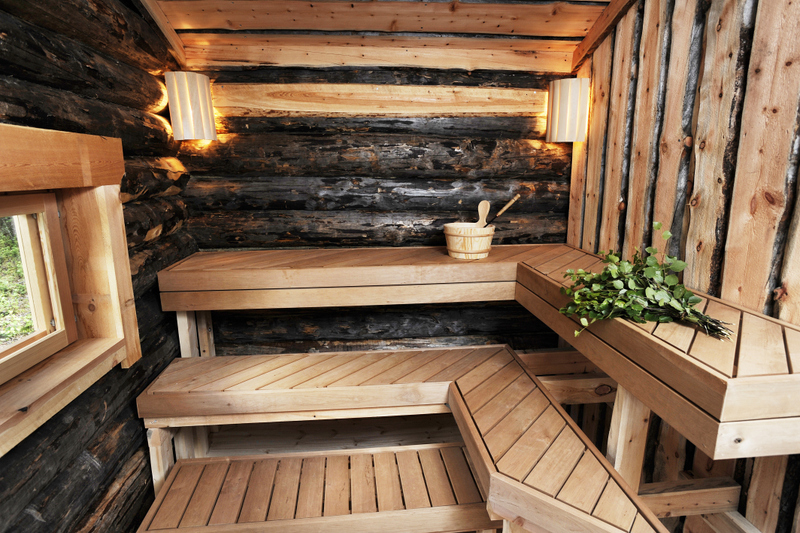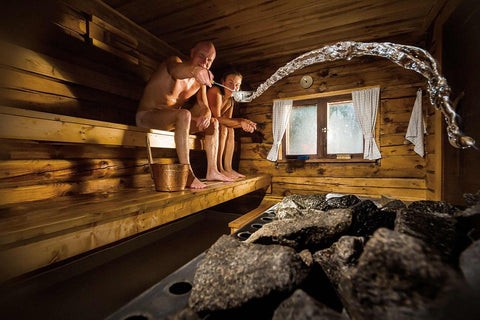The Only Guide for Traditional Sauna
The Only Guide for Traditional Sauna
Blog Article
How Traditional Sauna can Save You Time, Stress, and Money.
Table of ContentsGetting The Traditional Sauna To Work9 Simple Techniques For Traditional SaunaTraditional Sauna Fundamentals ExplainedThe Only Guide for Traditional Sauna
A lot of the weight lost in a sauna is water loss and is re-gained upon rehydrating. Without an uncertainty sauna can be an important part of a healthy and balanced weight loss program. To look at the differences in between typical and IR saunas, I will separate these into proven, academic, and produced distinctions.Hence, the best point in the saunawhich is at the ceiling directly above the sauna heateris commonly in between 185 and 190 F. Traditional Sauna. Claims that a typical sauna exceeds 200 F is just not true and not relevant for electrical saunas marketed in the United States. The temperature level for a far-infrared sauna is normally established in between 120 and 140 F; however, unlike the traditional sauna, the goal in and IR space is not to achieve a heat
Due to this, the temperature level distinction is virtually unnecessary, because profuse sweating leads to both sauna kinds, however the method of heating the body is various. In an IR sauna the bather will really feel hot and will sweat profusely, but at much reduced temperatures. Therefore, if the objective is to spend longer time periods in the sauna, the IR sauna is an excellent choice.

Examine This Report about Traditional Sauna
When the high temperature level is accomplished, the aspects cycle on and off to keep the heat. The majority of typical sauna individuals appreciate pouring water over the rocks to develop heavy steam to increase sauna humidity degrees. The benefits of putting water over the rocks include: making the area extra comfy, moistening the nasal passages, and allowing the use of aromatherapy by mixing crucial oils with the water.
In a far-infrared sauna, the warm front permeate the body to successfully warm the body and elevate the body core temperature level. To accomplish this boosted temperature, Far-infrared emitters create infrared energy which is close to the very same wavelength as that which the body naturally emitsoften described as the "Important Variety" of 7 to 14 microns), so the power is well obtained by the body.
When the power enters the body, it triggers the body temperature to boost and ultimately leads to sweating. In an infrared sauna it is necessary for the emitters/heaters to remain on almost continuously. Since there is no mass of rocks to retain warm, use this link the sauna will certainly cool down if the emitters shut down.
As stated above, the sauna bather in an infrared space wishes to place himself before operating emitters to get optimal advantage from the warmth. The heating time for the 2 spaces can be extremely different, depending on check my reference how the rooms are used. For a typical sauna, a bather needs to allow 30-40 minutes for the space to achieve a preferred temperature level and to effectively pre-heat the rocks.
The Definitive Guide for Traditional Sauna
A well constructed sauna will commonly attain a temperature level of 150-160 F in regarding 30-40 minutes. For hotter temperatures, the space may require to warmth for a longer duration.
To some, 15 minutes was "thrown away" while the infrared energy heated up the timber panels as opposed to heating up a body, while others discover a pre-heated area to be extra comfy and believe an elevated starting temperature level is essential to start sweating. The length of suggested usage for each space is around the exact same (10-15 mins per session); nonetheless, as a result of the lower air temperature levels and the capacity to really feel the impacts of official site infrared warmth much faster than a typical sauna, it is not uncommon for a person to invest a total amount of 20-30 mins in an infrared sauna.
Traditional saunas tend to be larger (hence make use of more electrical energy) than infrared saunas, although standard saunas are definitely available in one and two person sizes. For a two-person conventional sauna, 5x6 or 5x7 size is most popular. The top bench can easily seat two or three people and is likewise long enough to relax throughout the sauna session.


The typical price per kWH of electricity in the united state is roughly $0.11, so a 4.5 kW heating system will certainly cost about $.50 to run for one hour, if the heater runs constantly for one hour. Typically a sauna heater will certainly run for 75% of the very first hour and 50% of succeeding hours on since the aspects cycle once the set temperature level is attained.
What Does Traditional Sauna Mean?
A two person far-infrared space is generally physically smaller than a traditional sauna, typically about 4' x 4' or smaller sized. The IR heating unit is normally 1.5-1.7 kW using a 120 volt 15 amp plug-in solution. Considering that the area can be made use of earlier than a sauna area, we will certainly assume the room is used for to of an hour including warmth up time.
Ultimately, there is a hardly ever talked about difference in the social experience between both spaces. While our culture has lost some of the social benefit of the typical sauna experience, it can be extremely socially gratifying. From family members time in the sauna, to heart-felt discussions with better halves, to sauna partiesthe typical sauna experience can bring about intimate interacting socially.
The majority of greater end infrared spaces include colored light therapy, sound systems and full-glass fronts.
Report this page